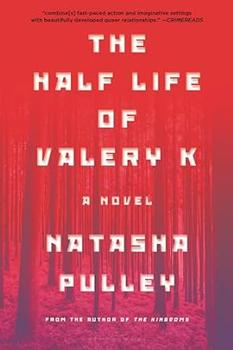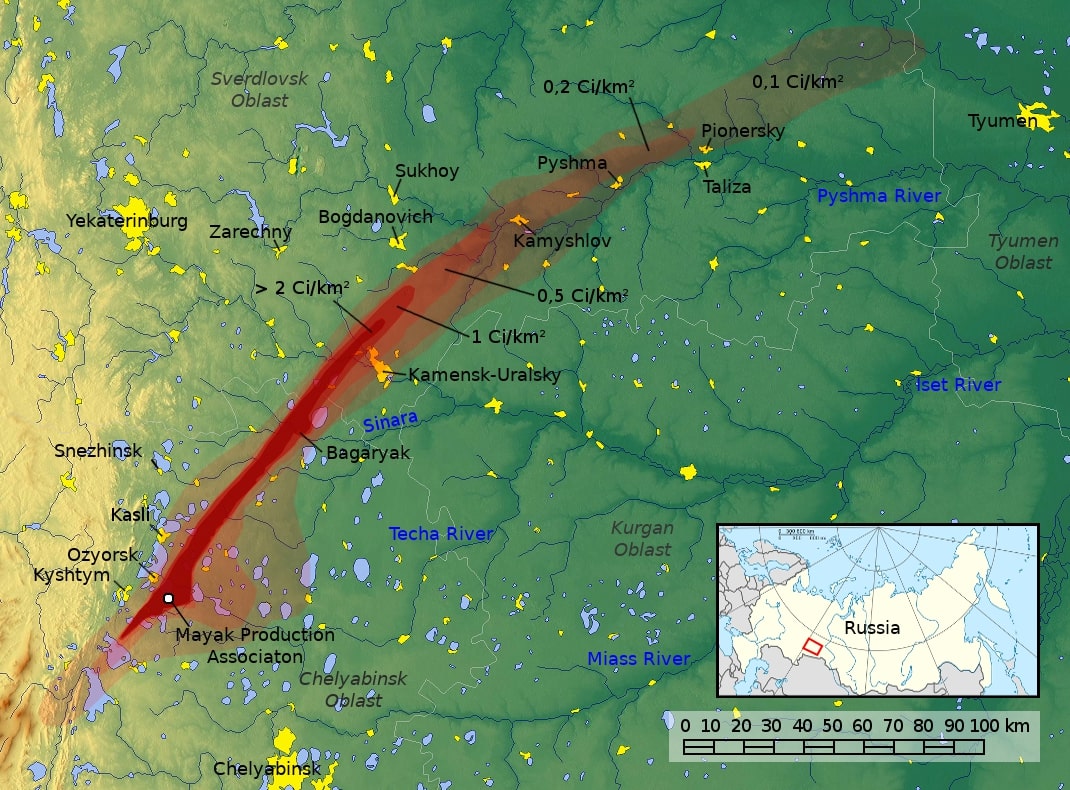Summary | Excerpt | Reviews | Beyond the Book | Read-Alikes | Genres & Themes | Author Bio

This article relates to The Half Life of Valery K
 While Chernobyl may be the first incident that comes to mind when someone thinks about nuclear disasters in the 20th century, this event actually had a precursor in the USSR: the "Kyshtym disaster" of 1957. Basing her novel The Half Life of Valery K on this event, author Natasha Pulley's fictional "City 40" is modeled on Chelyabinsk-40, or as it is known today, Ozersk.
While Chernobyl may be the first incident that comes to mind when someone thinks about nuclear disasters in the 20th century, this event actually had a precursor in the USSR: the "Kyshtym disaster" of 1957. Basing her novel The Half Life of Valery K on this event, author Natasha Pulley's fictional "City 40" is modeled on Chelyabinsk-40, or as it is known today, Ozersk.
Nestled in the Ural Mountains in the Chelyabinsk Region, Ozersk is home to one of the biggest nuclear facilities in the Russian Federation, the Mayak Production Association. Established in 1948, Mayak played a pivotal role in the Soviet Union's nuclear weapons program, responsible for producing plutonium and tritium, as well as highly enriched uranium. Russian state nuclear regulator and operator Rosatom currently runs it to reprocess spent nuclear fuel.
But on September 29, 1957, an underground tank full of nuclear weapon waste exploded, shooting at least 20 million curies of radiation into the atmosphere and causing radiation sickness as far away as Chelyabinsk (the region's capital city) 60 miles away. (For the layperson, a curie is one of three units used to measure the radioactivity in a sample material.) From research released in 1995 using indirect data, the estimate of 20 million curies is most likely on the low side, according to Pulley. Earlier estimates indicate a more realistic guess of 50 million curies of radiation escaped into the air, putting it at the low end of Chernobyl's estimated range of 50-200 million curies.
The contamination was devastating, exposing roughly 272,000 people to radioactive fallout. About 9,000 square miles of land were irradiated and more than 10,000 people evacuated. With no direct data from Mayak available and Russia's close-fisted hold on information, the number of people harmed by the radiation can only be guessed at. At the time of the incident, Soviet authorities were quick to cover up the disaster — a relatively effortless operation as Mayak was a secret site and Chelyabinsk-40 one of several closed nuclear cities in the USSR. A closed city essentially meant just that — to live there, employees went through stringent background checks and remained within the city gates, enjoying higher wages, better health care and educational opportunities for their children. Since Chelyabinsk-40 was a secret, closed city in 1957, it was not marked on published maps, and the incident was confusingly labeled the "Kyshtym disaster," after the next nearest village.
The Soviet Union denied the incident until 1989, when the truth leaked out much like the radiation poisoning the Urals air. But it was not a surprise to everyone: the CIA knew about the Mayak accident as early as 1960 but kept the Soviets' secret to protect the "safe" reputation of the nuclear industry on the home front.
Map showing radioactive zone after the Kyshtym disaster, courtesy of Wikimedia Commons
Filed under People, Eras & Events
![]() This "beyond the book article" relates to The Half Life of Valery K. It originally ran in August 2022 and has been updated for the
March 2024 paperback edition.
Go to magazine.
This "beyond the book article" relates to The Half Life of Valery K. It originally ran in August 2022 and has been updated for the
March 2024 paperback edition.
Go to magazine.
Your guide toexceptional books
BookBrowse seeks out and recommends the best in contemporary fiction and nonfiction—books that not only engage and entertain but also deepen our understanding of ourselves and the world around us.